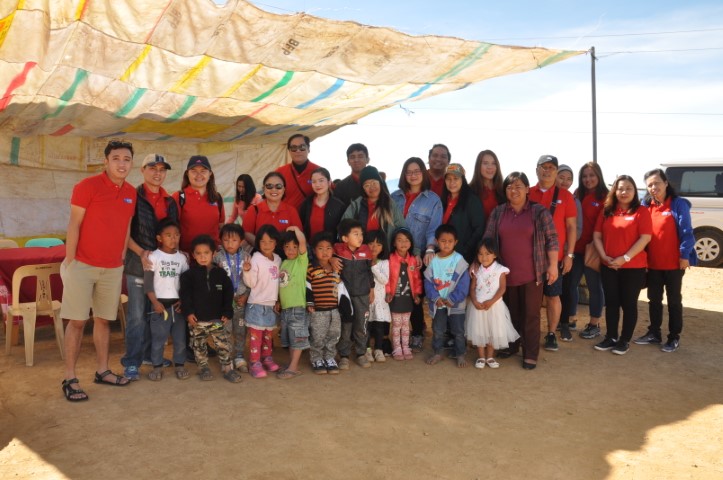I have a very unlikely example for advocacy in Public Relations and digital marketing. It is mind boggling to me how this brand has rocked the world with, of all things, KINDNESS.
You would be living under a rock if you do not know the Korean pop group BTS that is now influencing an ARMY of fans (and yes, they call themselves ARMY which stands for Adorable Representative MC for Youth) to spread kindness through fan-initiated projects all over the world.
This phenomenon is the simplest way I could put to focus how Advocacy PR is changing brands and lives in a world that longs for connection. Deprived of physical contact, social media has provided a safe and powerful haven for anything that creates relatability, sense of community and relevance.
How do they do it? How can brands learn from this group’s incredible success in connecting with loyal brand advocates? Is this the future of PR?
ADVOCATES
Advocacy is defined by the Merriam Webster dictionary as an act of supporting a cause or proposal. Advocacy is even one of the vital digital trends in 2021! In essence, if one echoes, promotes, defends or speaks on behalf of another, they are an advocate. It is an active process of pushing forward a cause because THEY TOO believe in it.
In the advent of social media, the ability of brands to be a head above others became a more difficult feat. It is no longer enough to be purposeful, operating on your “Why?”, or have well-defined value propositions. Brands need to assert resonance loudly and closely in the lives of their market. If they are not making a difference, they do not make a dent.
“If they are not making a difference, they do not make a dent.“
Nowadays, people long to take an active part in the good that brands are creating. People want to actively participate in being a force for good themselves. It is their voice that should matter above ours. In the process, brand loyalty and commitment are created.
How and where do brands begin creating advocates? They can start with their current customers and even employees. One such example is the ARC Refreshment Corporation’s “My Gulay Garden”, a project first launched among employees of the company in the hope of spreading the company’s environmental and sustainability advocacy. ARC trained their employees to do urban gardening growing vegetables and herbs from their backyard using composted kitchen wastes accessible in every home. Recognizing that food security goes hand in hand with community empowerment, these employee advocates were encouraged to share what they know to their neighbors and be a force for good in their own communities.

ARC Refreshment Corproration’s My Gulay Garden encouraged employees to reuse and recycle the brand’s own PET bottles as planters in starting their own urban garden. To really drive sustainability home, they even encouraged their employees to bring the information to their respective barangays!
BELONGING
Belongingness is a basic human need. We are drawn to relate with people or things that reflect our beliefs, our way of life, our being. Good brands focus on individuals. Great brands focus on communities and shared experiences.
An example is “Hope from Within”, an advocacy for medical and financial access for cancer patients by MSD in the Philippines. Putting together people who share similar experiences in fighting cancer, they provide the public with much needed information on how to tackle the challenges of the disease. The advocacy helps patients get a hand on resources like finding a doctor, connecting them to funding, and information on the different treatments available. All of these in the hope to send a message that they are not alone. They send a message of empathy as well as empowerment.
Tita Hope is the face of the Cancer Game Plan campaign, promoting better and more equitable cancer care access for every Filipino patient, and emphasizing the message that cancer is no longer a death sentence.
SINCERITY and TRANSPARENCY
When we are on a quest for the same end, we create a sense of identity and belonging among users. With this, brands are entrusted with a vulnerable asset – their advocates’ trust. How does a brand’s advocacy move away from remaining a tactic and secure itself as integral to the brand?
“How does a brand’s advocacy move away from remaining a tactic and secure itself as integral to the brand?”
Stay with the facts. Educate and give the advocates the POWER OF CHOICE. This also means that whereas there may be strong emotions involved in advocacy, this should not be the only reason why people rally behind the brand’s causes. It should make sense in their reality.
Moreover, brands should also be thoughtful in the way they handle their products and practices. Sincerity becomes evident when the world the brand is aiming to create outside exists within the daily life of the organization. MSD in the Philippines, for instance, held a vaccination confidence campaign called “Bakuna Muna”, to help inform the public, particularly on a grassroots level, of the benefits of immunization to help fight vaccine-preventable diseases. This response to the declining vaccine confidence rates is a prime example of helping shape an ideal reality (in this case, herd immunity for everyone’s protection!)
The Future of Advocacy PR
Advocacy PR is a two-pronged approach to instill brand recall, loyalty and significance. One, it is a sincere effort to share with the market the values and changes that the organization believes could happen through their products and their voice. Second, it allows clients to define themselves using their identification with the brand and its causes.
Far from the manipulative staging of feel-good initiatives of the past, the more discerning market now fully supports brands that show them how the world should be. If this is the world they too would like to live in, you have them for life.
Back to BTS. They are UNICEF partners in its LOVE MYSELF campaign that encourages people to find love from within and spread the same love to the people around them. They donate a portion of what they earn with their music, they donate 100% of their profit from merchandise and they communicate with their fanbase personally. They sing about mental health and spreading kindness around.
Their BRAND trusts that people would want to live their message- that everyone wants to be a force for good. Don’t we all want to believe in the good in us? If you’d like your brand to be a force for good, contact NGP-IMC today. Your advocacy PR campaign awaits.
About the Author:
Imelda Say is a Leadership, Coaching and Sales Trainer.
“In the advent of social media, the ability of brands to be a head above others became a more difficult feat. As a corporate trainer who has worked and coached leaders on the importance of culture, empathy and intentionality in leadership, I have seen how different organizations define and redefine their value propositions. Successful leaders consistently insist for their organization’s ears to stay close to the ground to understand consumer needs, mindsets and lifestyle. Brands need to assert resonance loudly and closely in the lives of their market. If they are not making a difference, they do not make a dent.”


